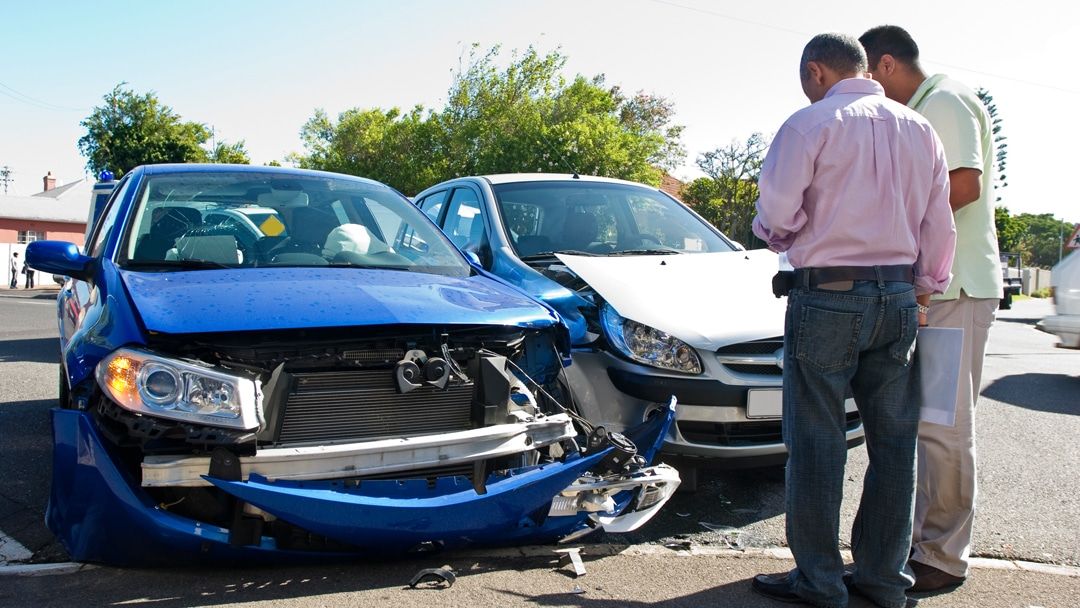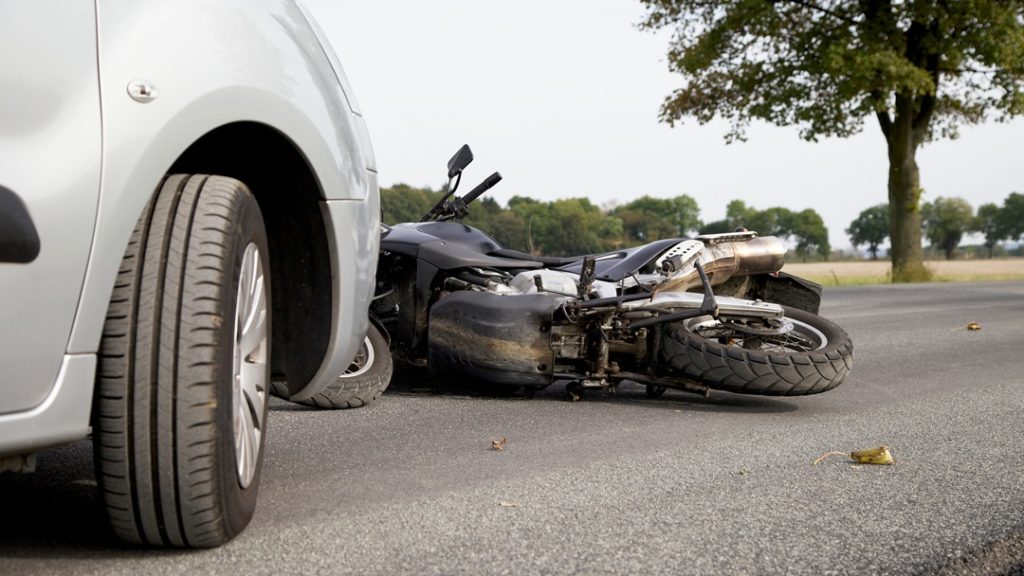
I Got Rear Ended How Much Money Will I Get?
I Got Rear Ended How Much Money Will I Get?
Delve into the depths of damages, deceitful insurance companies, and drivers who shirk their responsibilities.
Unveil the hidden costs that lie beneath the surface.
Explore the intricacies of compensation, from evaluating initial assessments to quantifying the emotional toll.
Learn how to protect yourself from the reckless actions of uninsured motorists.
Seek legal guidance when needed.
Uncover the truth and calculate the real cost of a rear-end collision and collect the maximum compensation you are owed as an accident victim.
Understanding the Initial Assessment: Evaluating the Damage
You need to start by assessing the damage caused by the rear-end collision. After any accident, it’s crucial to evaluate the extent of the damage to your vehicle. A Rear-end car accident can result in various types of damage, including property damage to your car.
Once an experienced car accident attorney has determined the scope of the damage, your law firm can proceed with filing an insurance claim. It’s also important to notify your insurance company about the collision as soon as possible. They’ll guide you through the process and help you understand your rights and options.
Remember, compensation for property damage is often covered by the at-fault driver’s insurance, so it’s essential to gather all the necessary evidence, such as photographs and repair estimates, to support your claim. However, keep in mind that not all insurance companies will provide adequate insurance settlements.
In some cases, you or your rear end accident lawyer may need to negotiate with the other driver’s insurance company to ensure you receive fair compensation for the costs associated with repairing your vehicle. Understanding the initial assessment and evaluating the damage in your rear end accident case is the first step in seeking proper compensation for a rear-end collision.
Factoring in Lost Wages: Calculating Compensation for Time Missed
Calculating the compensation for time missed from work due to a rear-end collision can be a complex process, but by understanding the factors involved, you can determine the financial losses you’re entitled to recover. When it comes to financial compensation for lost wages, there are several key factors to consider.
Firstly, you need to gather documentation that proves the time missed from work was a direct result of the rear-end collision. This can include medical records, doctor’s disability notes, and any other relevant documentation that supports your claim.
Next, your legal team will need to calculate the exact amount of wages lost during the time you were unable to work. This includes not only your regular salary but also any additional benefits or bonuses you may have missed out on.
It’s important to note that insurance companies often try to minimize the compensation for lost wages. They may argue that you could have returned to work sooner or that your injuries weren’t severe enough to warrant time off. This is where having strong evidence and documentation becomes crucial in supporting your claim.
Lastly, irresponsible drivers who cause rear-end collisions can be held accountable for the damages they’ve caused, including the lost wages you have incurred. By working with an experienced personal injury attorney, you can navigate the complexities of calculating compensation for time missed and ensure that you receive the appropriate amount you’re entitled to.
Analyzing Insurance Policies: Unveiling Coverage Limits
You should be aware of the coverage limits and terms outlined in your insurance policy to fully understand the extent of your protection.
When it comes to analyzing insurance policies after a rear-end collision, it’s important to know what your insurance limits are and what additional insurance coverage you may have.
Most states require drivers to have liability insurance, which covers bodily injury and property damage caused by a negligent driver. The coverage limits for liability insurance vary depending on the policy and the insurance company. You can usually find details on these limits in your automobile insurance guide.
In New York all automobile insurance policies have minimum PIP No-Fault coverage. To protect yourself even further, you may want to consider additional personal injury protection (PIP) or collision coverage. Additional PIP can help cover your medical expenses and lost wages over and above the New York State minimum coverage, while collision coverage can help pay for any damages to your vehicle.
Understanding your insurance coverage and insurance policy limits is crucial when filing an insurance claim after being rear-ended by a careless or negligent driver.
Examining Liability: Identifying the Responsible Party
When dealing with accident claims after a rear-end collision, it’s important to consider the actions of both drivers and assess who’s at fault for the accident. Identifying the responsible party can be a crucial step in seeking compensation for the damages incurred. Here are some key factors to consider when examining liability in a rear-end collision:
- Rear-end collision: A rear-end crash occurs when one vehicle hits the back of another vehicle. In most cases, the following vehicle or the rear driver is considered at fault, as they’re responsible for maintaining a safe distance and reacting in a timely manner.
- Actions at the accident scene: Gathering evidence from the accident scene is essential. Photographs, witness statements, and police reports can help determine who’s responsible for the collision.
- Insurance companies: Insurance companies play a crucial role in determining liability. They’ll investigate the accident and assess the damages to determine who should be held responsible.
- Irresponsible drivers: Sometimes, the responsible party may try to shift blame or deny their actions. It’s important to have a clear understanding of the situation and hold the irresponsible driver accountable. Working with a reputable experienced personal injury lawyer who is familiar with accident liability laws is paramount in this process.
Investigating Negligence: Proving Fault in a Rear-End Collision
By examining the actions of both drivers and gathering sufficient evidence, you can effectively prove fault in a rear-end collision. When investigating negligence in a rear-end collision, it’s important to consider various factors.
First, look into the insurance coverage of the drivers involved. Analyze the actions of the vehicle or truck driver involved in the collision. Did they maintain a safe distance and follow traffic rules? Did they show signs of distracted driving? These factors can help establish fault.
Furthermore, consider the injuries sustained by the victims. Rear-end collisions often result in injuries such as whiplash, shoulder injury, knee injury, nerve damage, and emotional pain. These injuries not only cause physical and emotional suffering but also lead to medical expenses and loss of wages. By documenting these injuries and calculating the associated costs, you can strengthen your case for compensation.
In some cases, punitive damages may also be applicable. These damages are awarded to punish the negligent driver for their actions and to deter similar behavior in the future. To claim punitive damages, you need to prove that the negligent driver’s actions were intentional, reckless, or grossly negligent.
Negotiating With Insurance Adjusters: Maximizing Your Compensation
Often, insurance adjusters will try to minimize your compensation, but it’s crucial to understand your rights and negotiate effectively to maximize your compensation. When negotiating with insurance adjusters after a rear-end collision, keep these key strategies in mind:
- Gather evidence: Before negotiating, collect as much evidence as possible to support your claim. This includes photographs of the accident scene, medical records, repair estimates, and witness statements. The more evidence you have, the stronger your case will be.
- Know your worth: Familiarize yourself with the full extent of your damages, including medical expenses, property damage, lost wages, and pain and suffering. Understanding the true value of your claim will help you negotiate from a position of strength.
- Stay persistent: Insurance adjusters may try to delay the process or offer a low settlement initially. Don’t settle for less than you deserve. Be persistent in your negotiations, and don’t be afraid to stand your ground.
- Consider legal representation: If negotiations become difficult or you feel overwhelmed, it may be beneficial to enlist the help of a personal injury attorney. They can navigate the complexities of the negotiation process and advocate for your best interests.
Understanding Comparative Negligence: How It Affects Your Compensation
When it comes to determining your compensation, it’s important to understand how comparative negligence can impact your case. Comparative negligence is a legal concept that assigns a percentage of fault to each party involved in an accident. This means that even if you were rear-ended by another vehicle, your own actions or negligence could still affect the amount of compensation you receive. Here’s what you need to know about comparative negligence and how it can affect your claim:
- Team up with an experienced attorney: A skilled attorney can help you navigate through the complexities of comparative negligence and ensure that your rights are protected.
- Shedding light on the crash claim: Comparative negligence can be used by the other party’s insurance company to argue that you were partially at fault for the accident. It’s crucial to gather evidence and present a strong case to counter these claims.
- Understanding rear vehicle liability: In rear-end collisions, the driver of the rear vehicle is often presumed to be at fault. However, if you suddenly stopped or made an unsafe lane change, your percentage of fault could be increased.
- Quantifying your losses: Comparative negligence can impact the compensation you receive for various losses, including medical expenses, property damage, loss of income, and quality of life losses. Understanding how fault is allocated will help you anticipate the impact on your compensation.
Uncovering Uninsured Motorist Coverage: Protecting Yourself From Irresponsible Drivers
To protect yourself from irresponsible drivers, it’s essential to understand the benefits of uninsured motorist coverage. Even though car insurance is a legal requirement in most states, not all drivers comply with this obligation. This means that if you get into an accident with an uninsured driver, you may be left to cover the costs on your own. Uninsured motorist coverage is designed to protect you in these situations.
When you have uninsured motorist coverage, your insurance company will step in and pay for your damages and injuries if the at-fault driver doesn’t have insurance. This coverage typically includes medical expenses, lost wages, and pain and suffering. It acts as a safety net, ensuring that you aren’t left financially burdened due to someone else’s negligence.
Having uninsured motorist coverage is especially important because the costs of an accident can quickly add up. Medical bills, vehicle repairs, and potential legal fees can put a strain on your finances. By having this coverage, you can have peace of mind knowing that you’re protected in the event of an accident with an uninsured driver.
It’s important to note that uninsured motorist coverage may not be automatic. You’ll need to add it to your insurance policy and pay an additional premium. However, the added cost is worth it for the protection it provides.
Seeking Legal Representation: When to Consult an Attorney
Hiring an attorney can greatly benefit your case after a rear-end collision. When determining whether or not to seek legal representation, it’s essential to consider the complexity of your case and the potential for a fair settlement. Here are four key factors to help you decide when to consult an attorney:
- Severity of injuries: If you sustained serious injuries in the accident, it’s crucial to have an attorney by your side. They can help ensure you receive proper medical treatment and fight for the compensation you deserve.
- Liability disputes: If there’s a dispute over who’s at fault for the accident, an attorney can gather evidence, interview witnesses, and handle the legal proceedings to establish liability and protect your rights.
- Insurance company tactics: Insurance companies may try to minimize your claim or deny it altogether. An experienced attorney understands these tactics and can negotiate with the insurance company on your behalf to maximize your compensation.
- Legal expertise: The legal process can be complex and overwhelming. An attorney specialized in personal injury law understands the intricacies of the system and can navigate through it, saving you time and stress.
Understanding Statutes of Limitations: Time Constraints for Filing a Claim
You must be aware of the specific time limitations for filing a claim after a rear-end collision, as they can significantly impact your ability to seek compensation. Statutes of limitations are laws that set a deadline for when you can file a claim. These deadlines vary from state to state, so it’s crucial to understand the laws in your jurisdiction.
In most states, the statute of limitations for personal injury claims arising from a rear-end collision is typically two to three years. In New York it is three years if not involving a Municipality. This means that you have a limited window of time to pursue legal action against the responsible party. If you fail to file a claim within this timeframe, you may lose your right to seek compensation for your injuries, medical expenses, and other damages.
It is important to note that the clock starts ticking from the date of the accident. Therefore, it’s crucial to act promptly and consult with an attorney as soon as possible. Waiting too long to file a claim can result in the loss of valuable evidence, witnesses’ memories fading, and difficulty in establishing liability.
Understanding the statutes of limitations is essential to protect your rights and ensure that you have a fair chance at receiving the compensation you deserve. By being aware of the time constraints, you can take the necessary steps to file your claim within the designated timeframe and increase your chances of a successful outcome.
Frequently Asked Questions
Are There Any Time Constraints for Filing a Claim After a Rear-End Collision?
You should know that there are time constraints for filing a claim after a rear-end collision. It’s important to act quickly and report the incident to your insurance company within a certain period.
How Does Comparative Negligence Affect the Compensation in a Rear-End Collision Case?
In a rear-end collision case, comparative negligence can impact your compensation. The more responsible you are for the accident, the less compensation you may receive. It’s important to understand how this can affect your claim.
How Can I Protect Myself From Irresponsible Drivers Who Are Uninsured?
To protect yourself from uninsured drivers, make sure you have uninsured motorist coverage. This type of insurance will compensate you for injuries and damages caused by drivers who don’t have insurance.
When Should I Consider Seeking Legal Representation After a Rear-End Collision?
If you’ve been involved in a rear-end collision, you should consider seeking legal representation if you’re facing significant injuries, property damage, or if the insurance company is not offering fair compensation.
Is There a Way to Calculate the Overall Cost of a Rear-End Collision, Considering All the Factors Mentioned in the Article?
You can calculate the overall cost of a rear-end collision by considering all the factors mentioned in the article. It’s important to take into account damages, insurance coverage, and the actions of the responsible driver.
Call The Law Offices of Law Offices of Stuart M. Kerner to Seek Your Rear End Collision Settlement Today
After a rear-end collision, calculating the real cost of damages can be complex and overwhelming. It’s like untangling a web of deceit, navigating through insurance companies and irresponsible drivers.
From evaluating initial damage to seeking compensation for injuries, property damage, lost wages, and emotional toll, it all adds up.
To protect yourself and understand your rights, consulting an attorney and being aware of time constraints is crucial.
Don’t let the aftermath of a collision be a never-ending maze.


